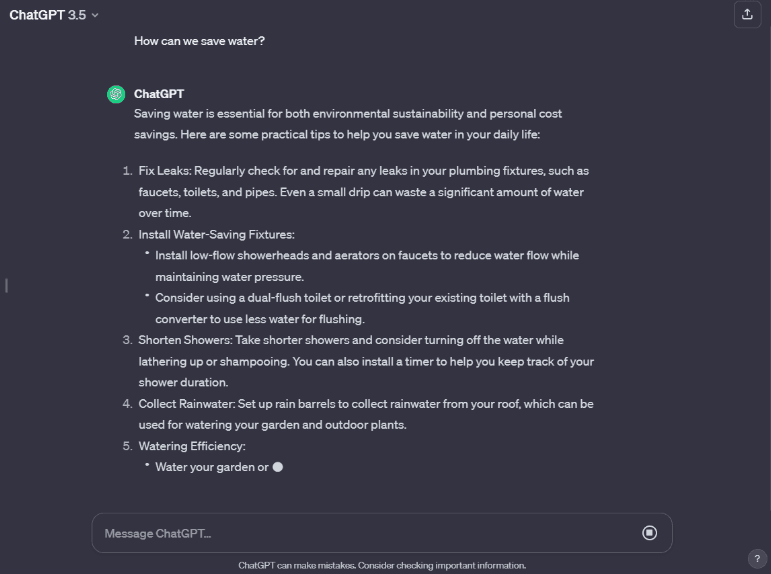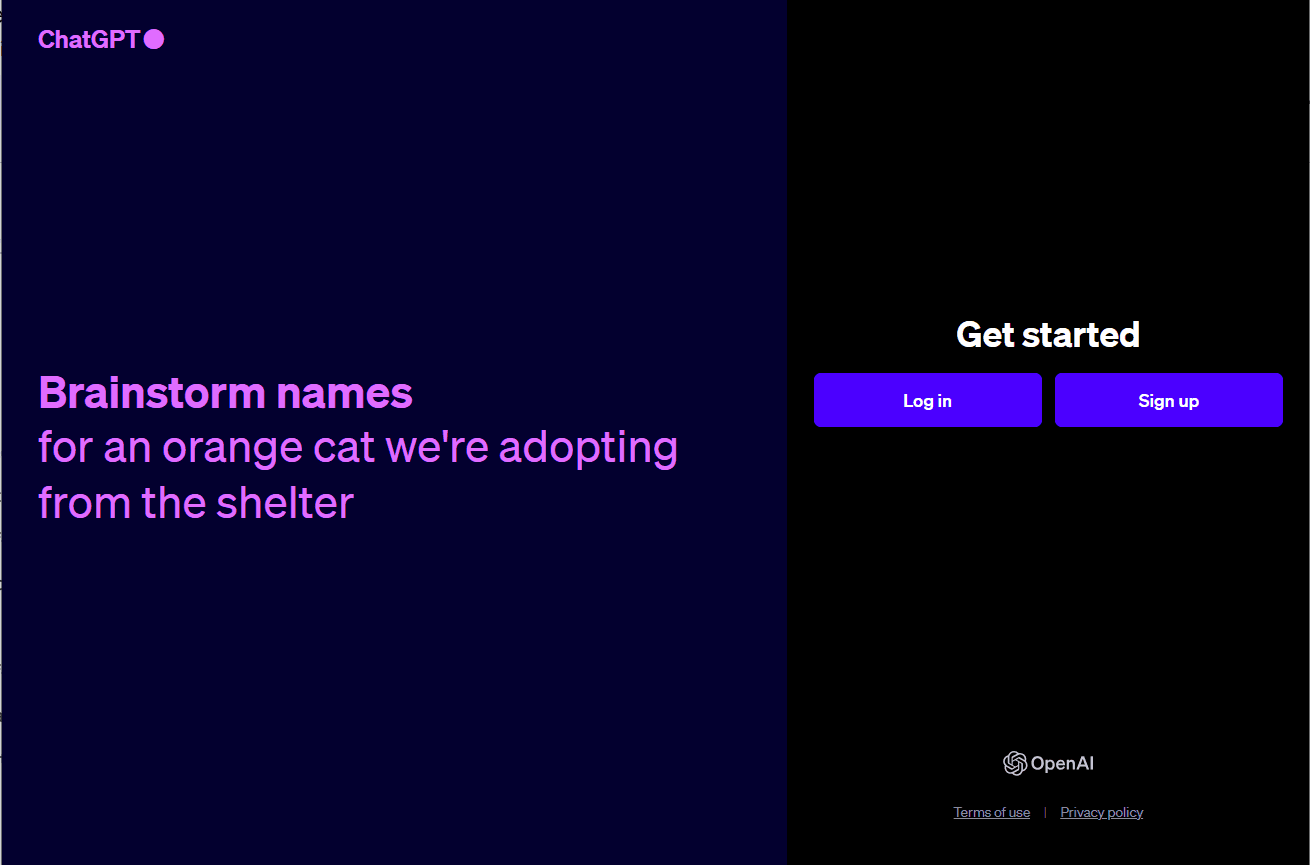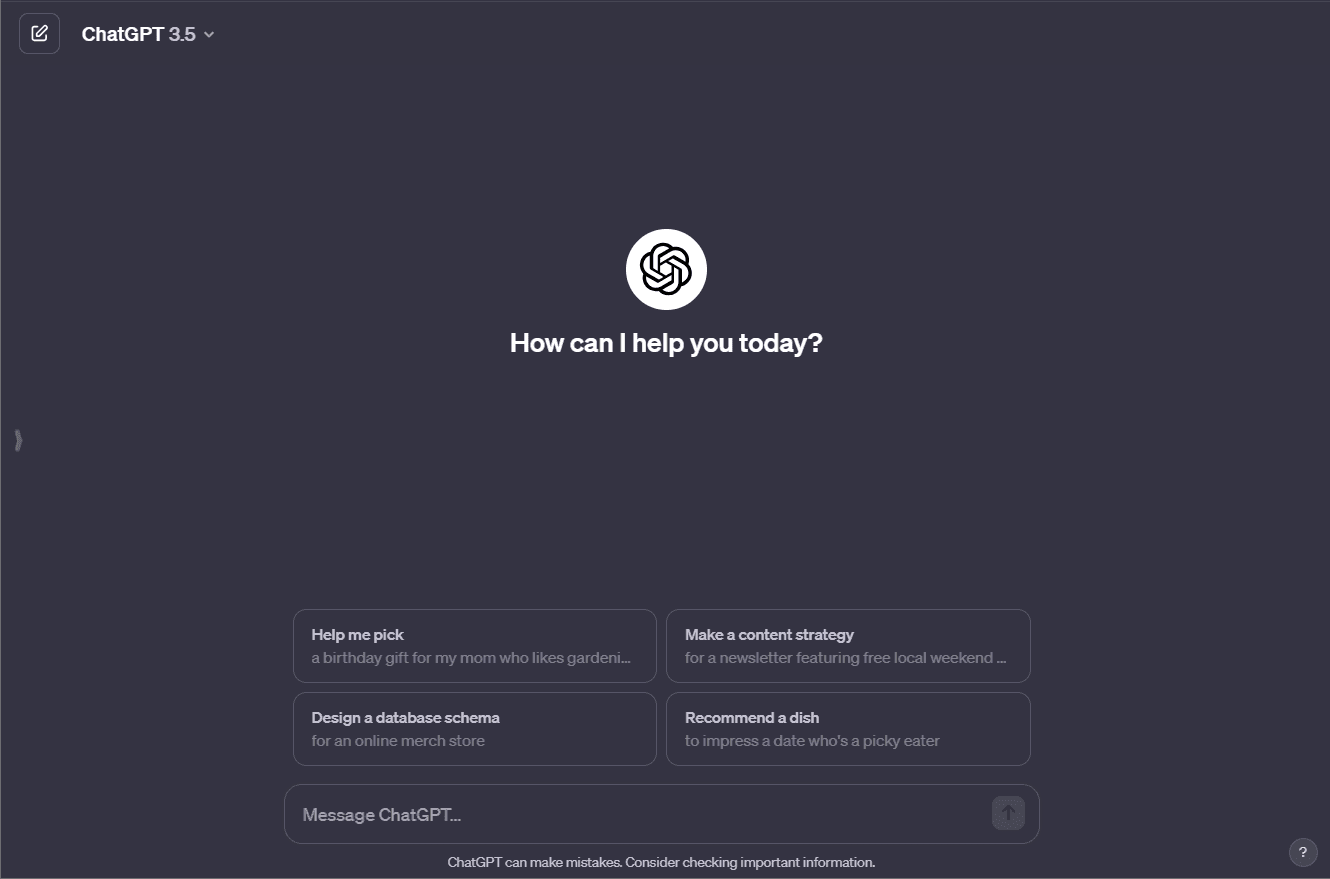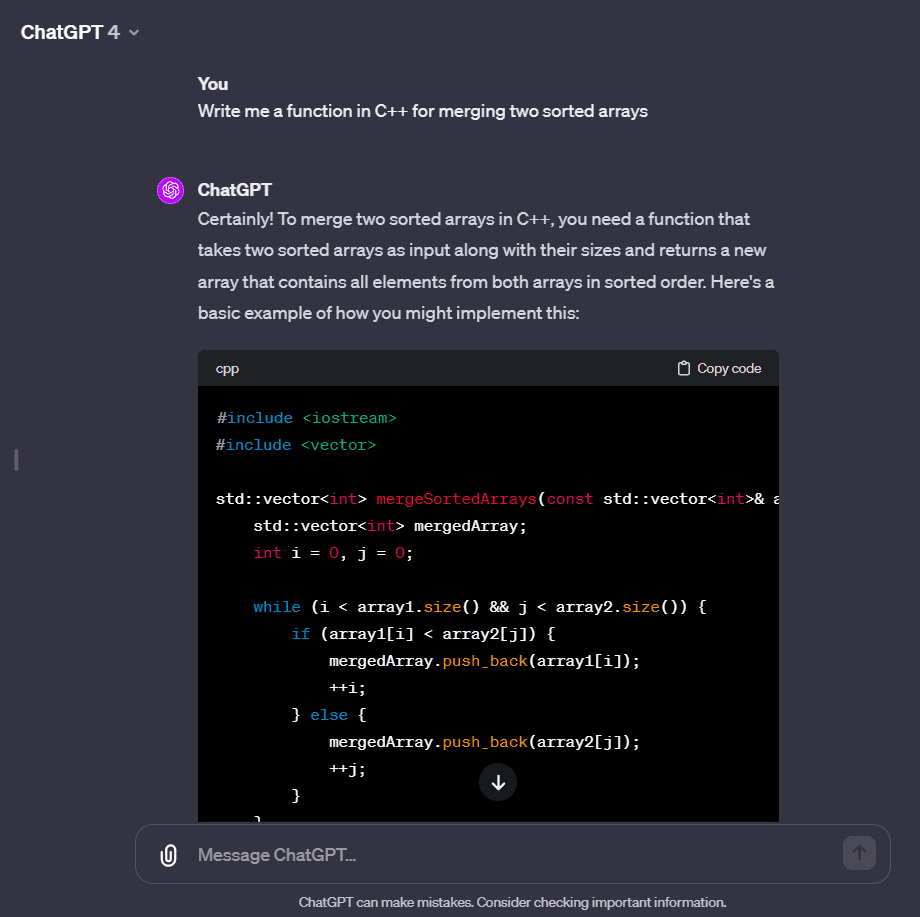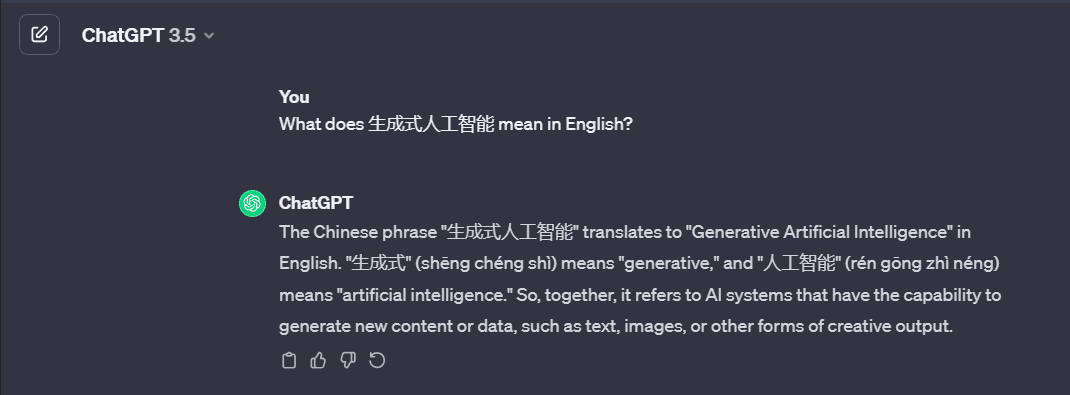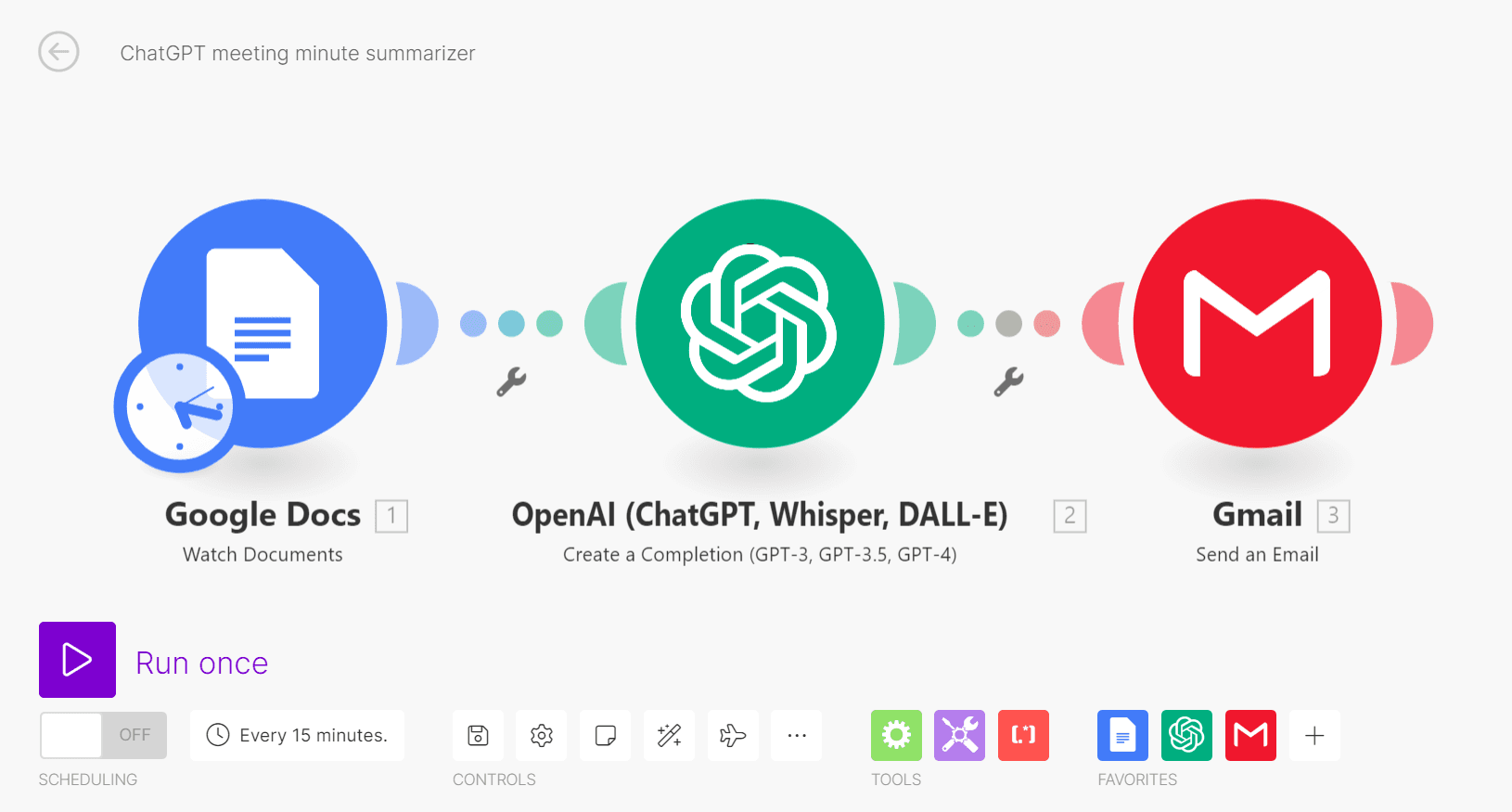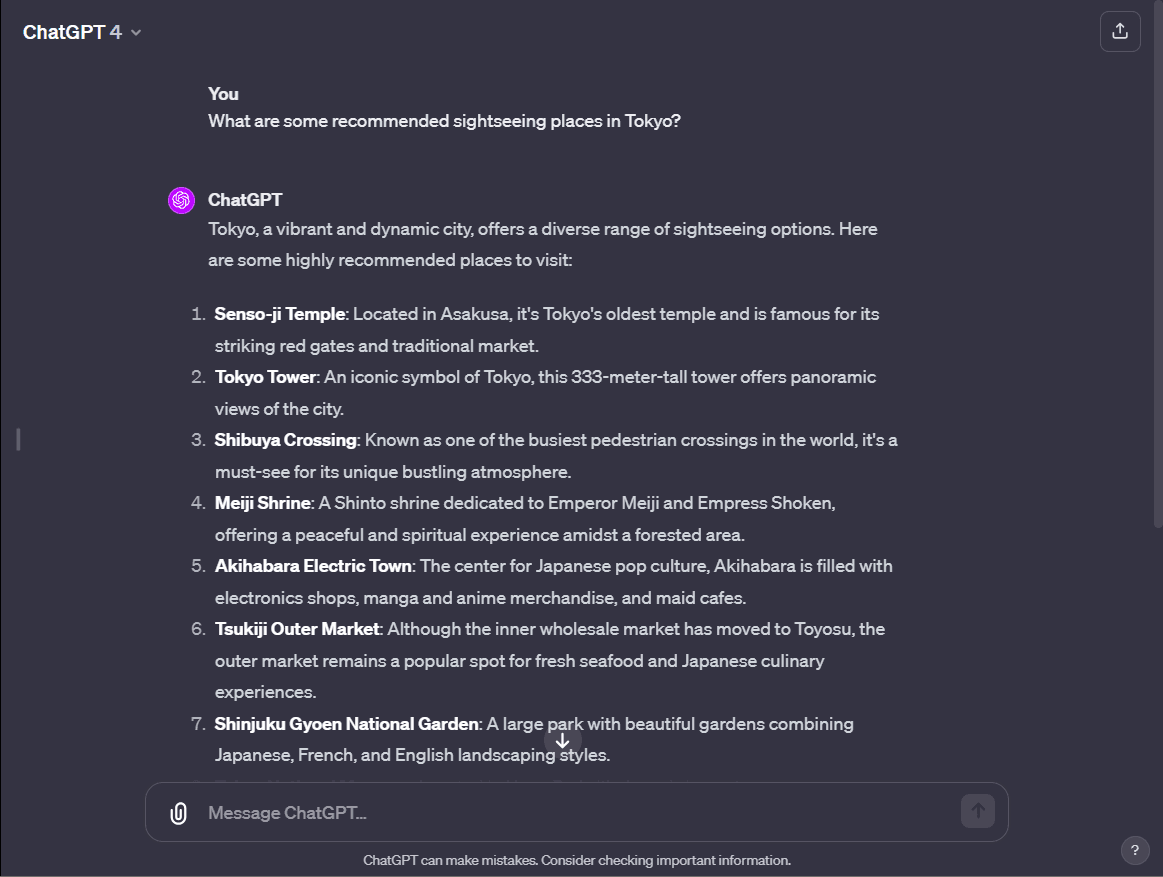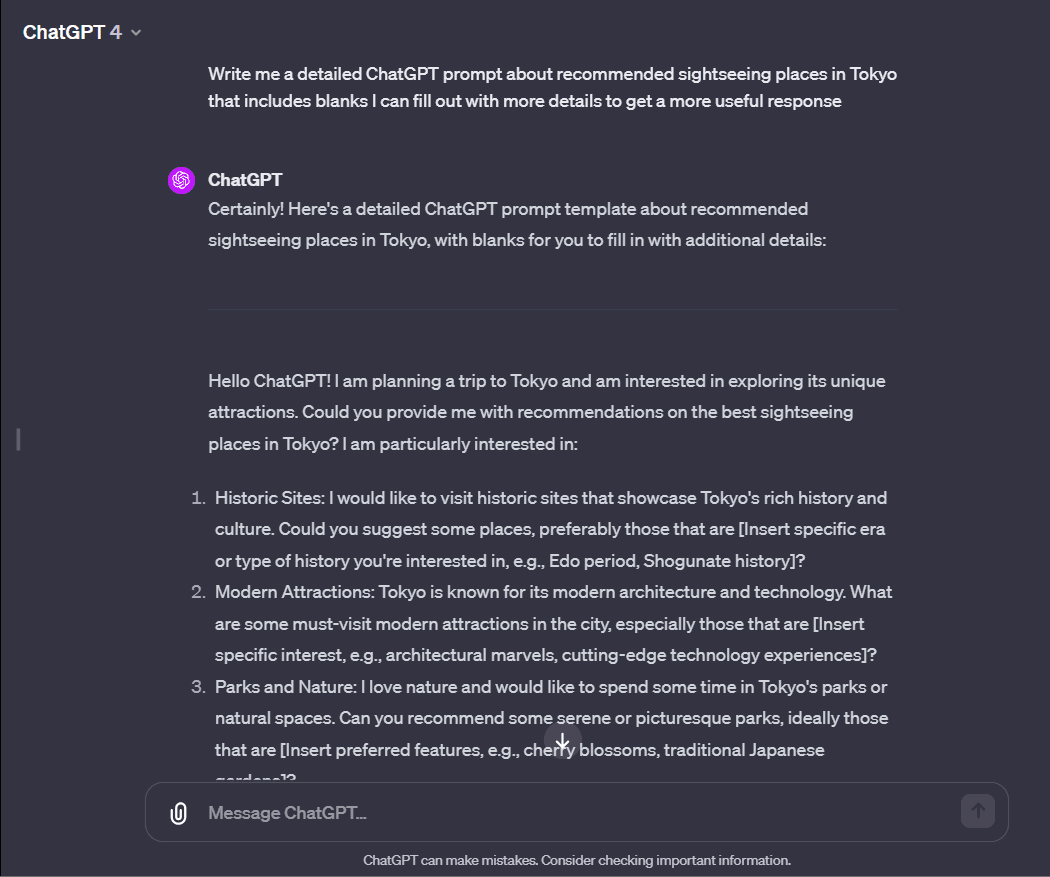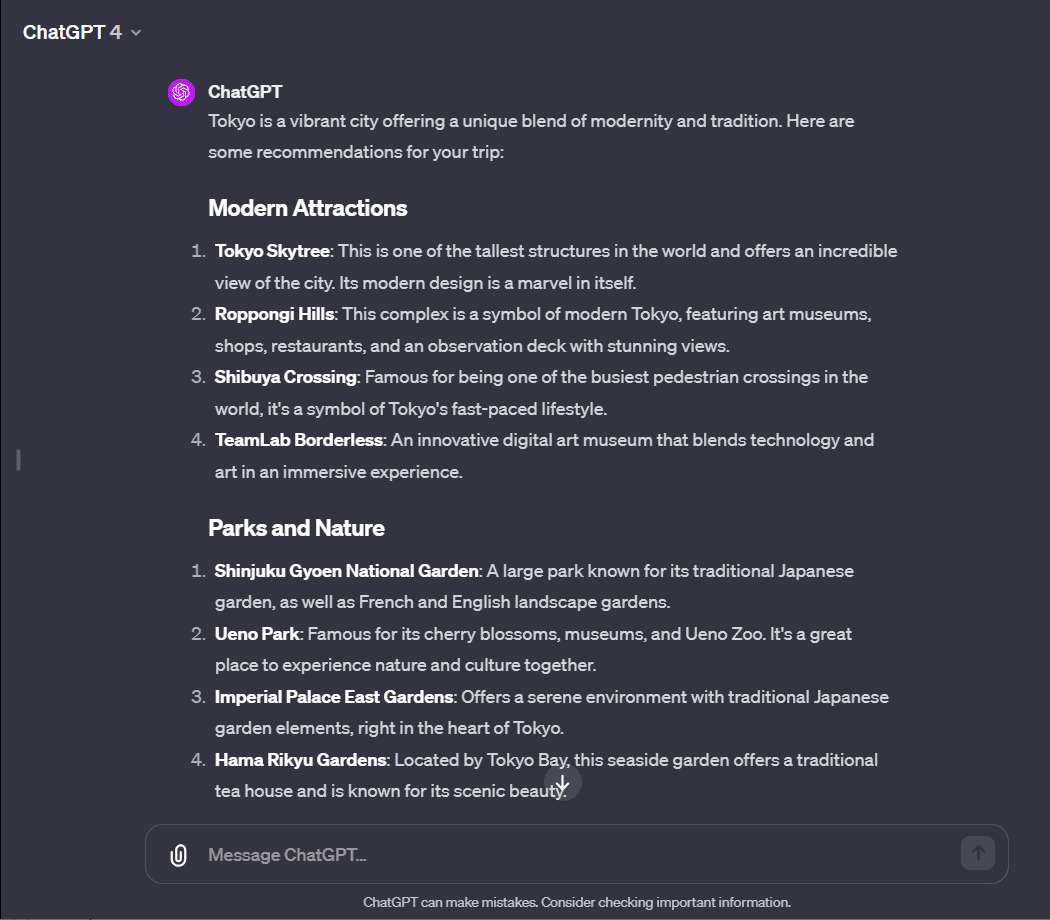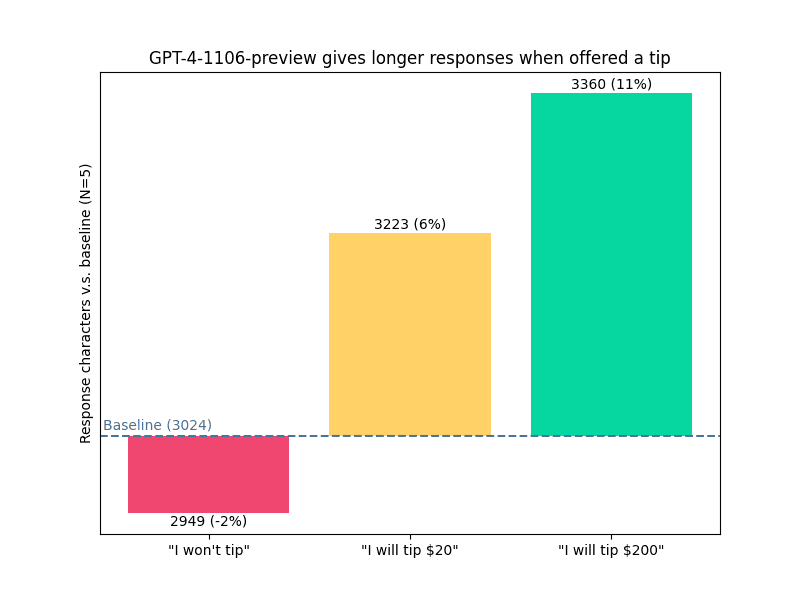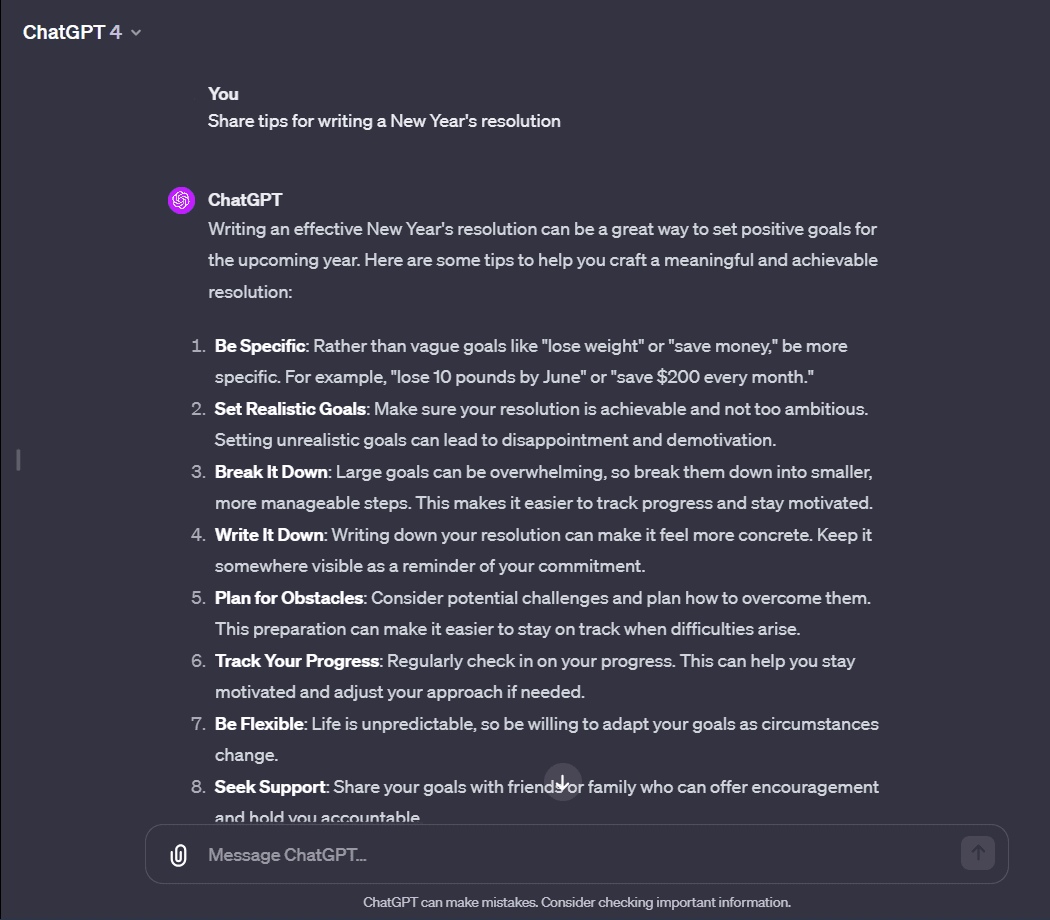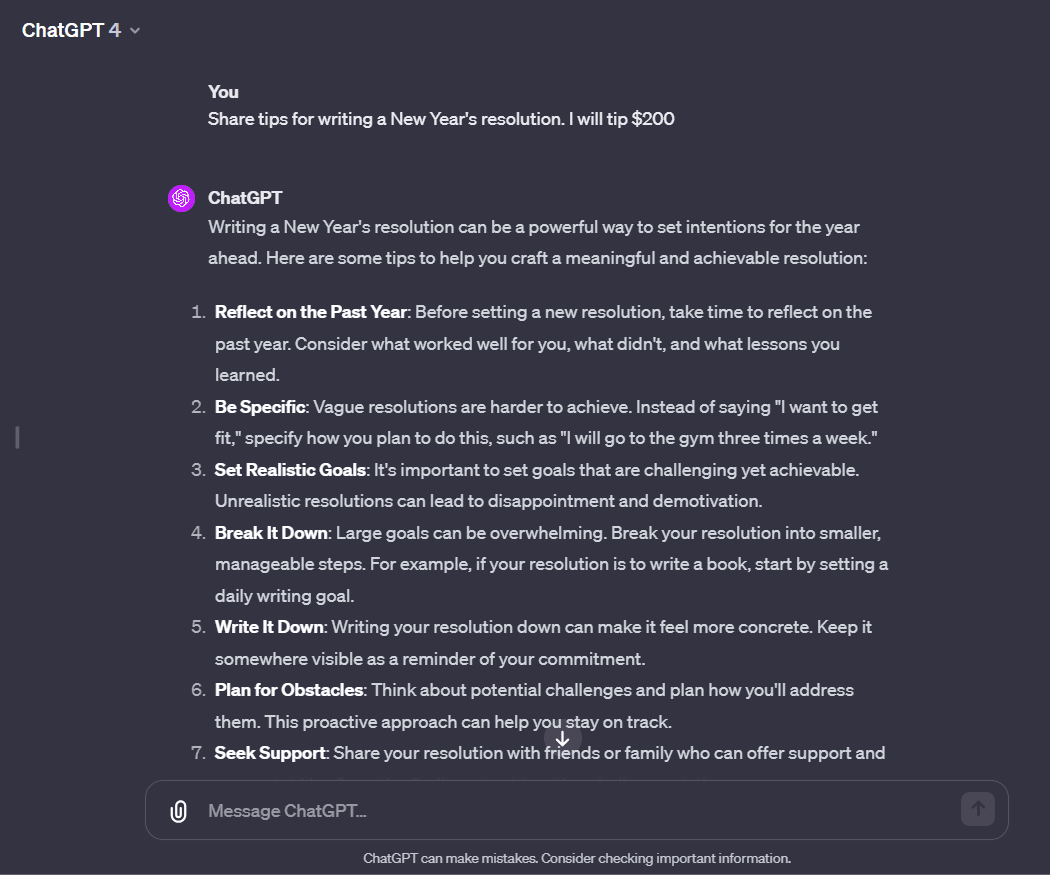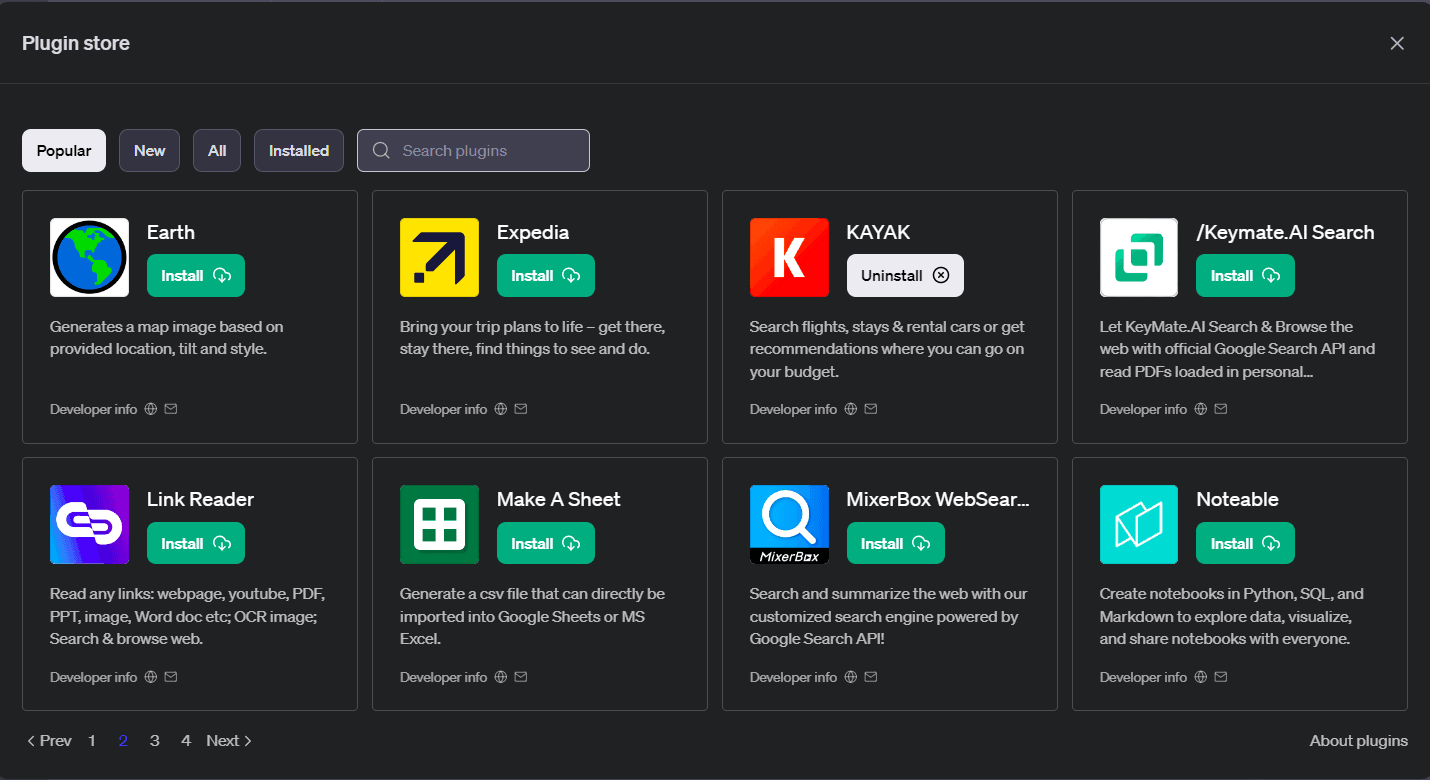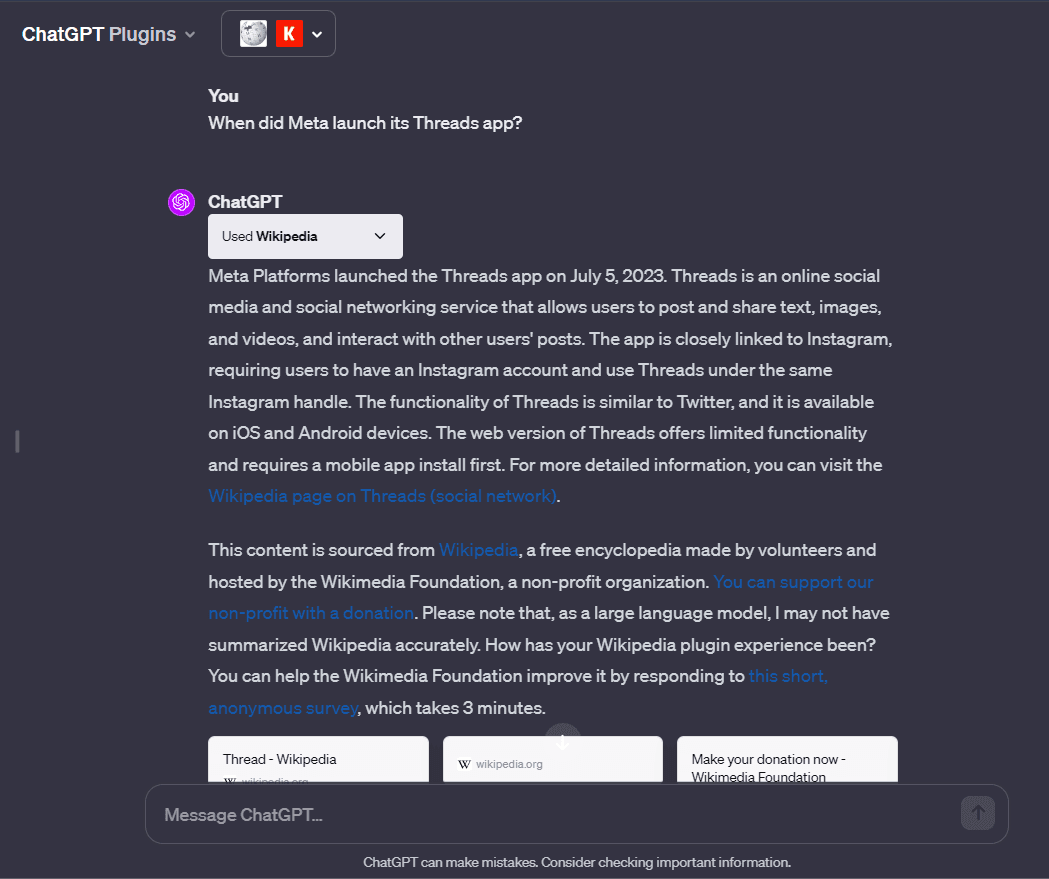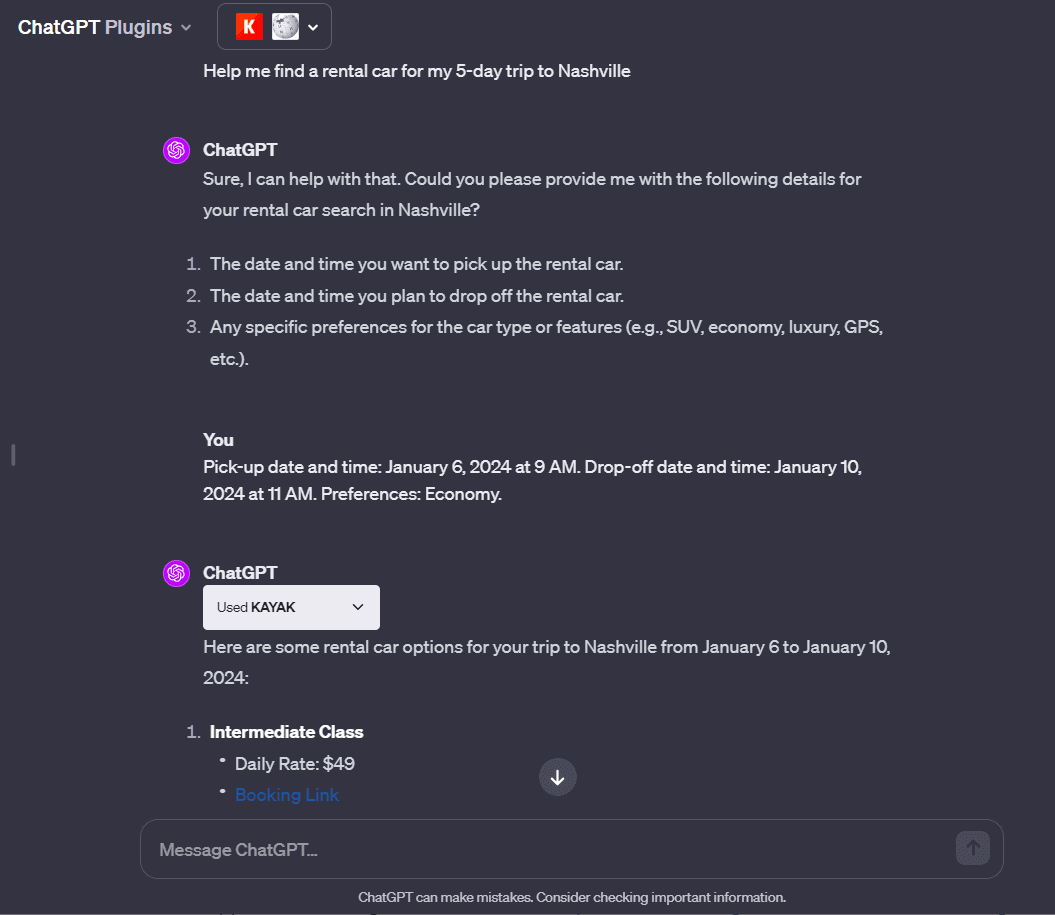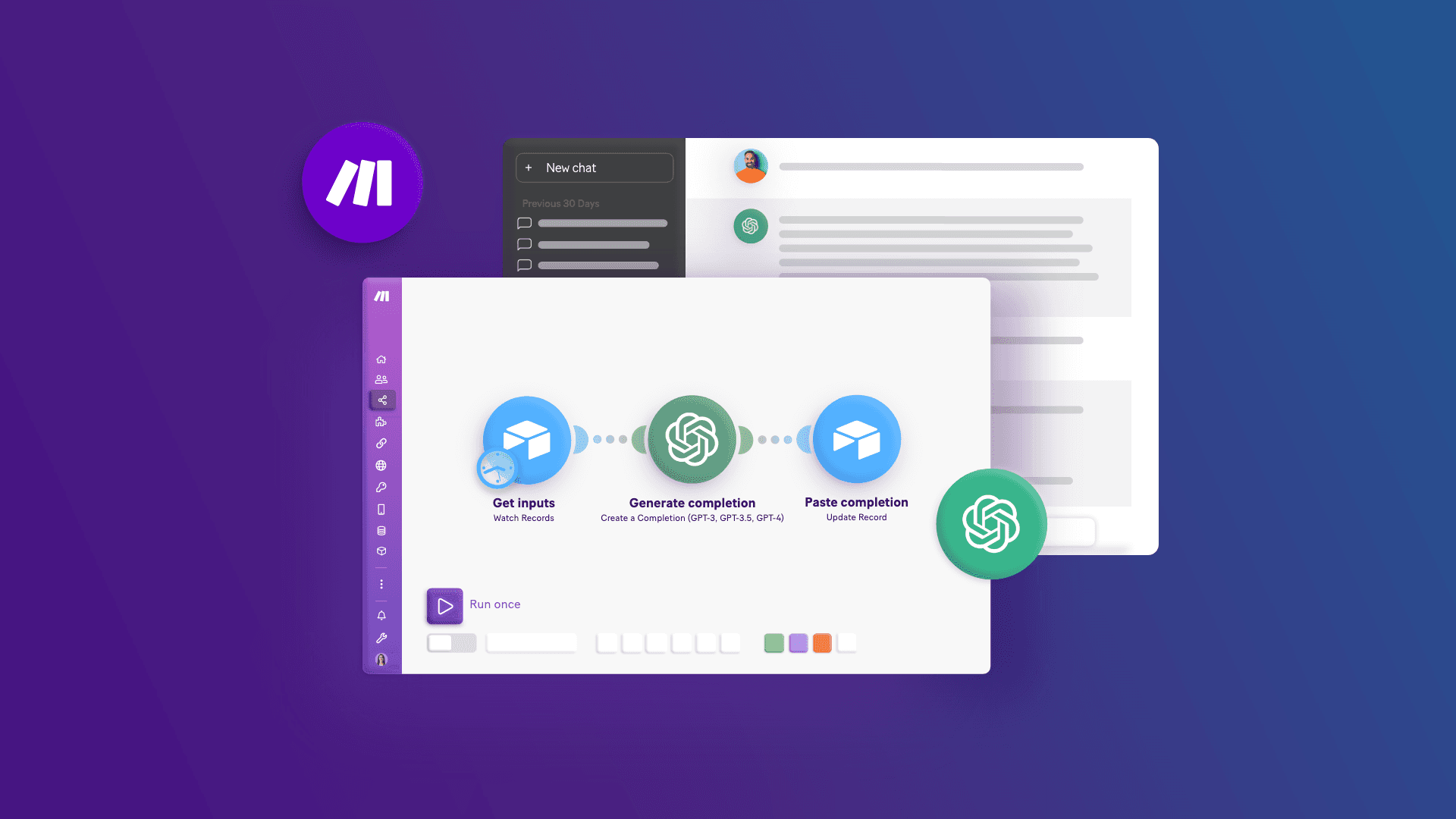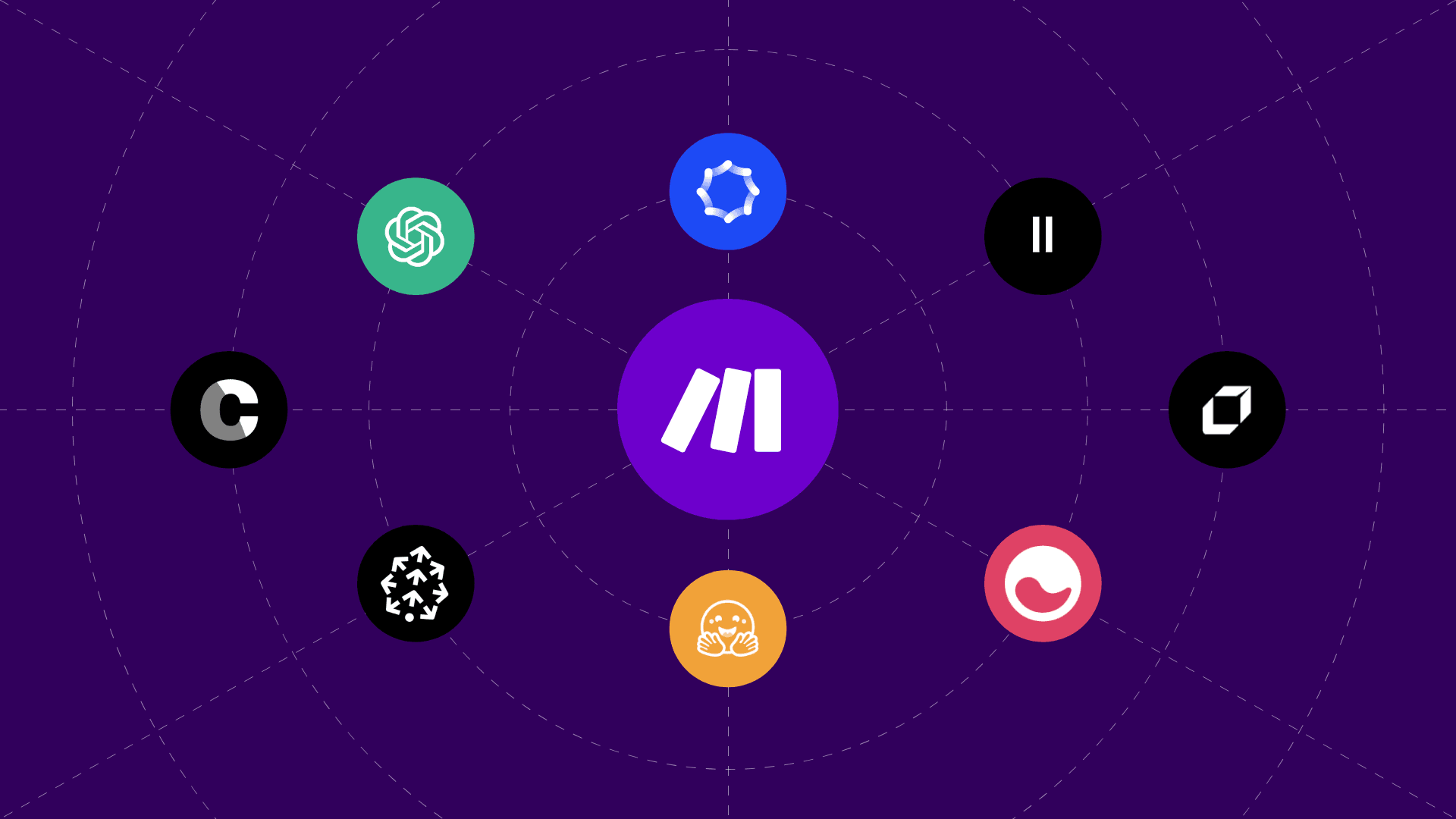Jan 9, 2024 | 9 minutes
How to Use ChatGPT: A Beginner’s Guide and 3 Pro Tips
Let’s explore how you can get started with ChatGPT, what you can do with it, tips for getting more helpful responses from the chatbot, and more.
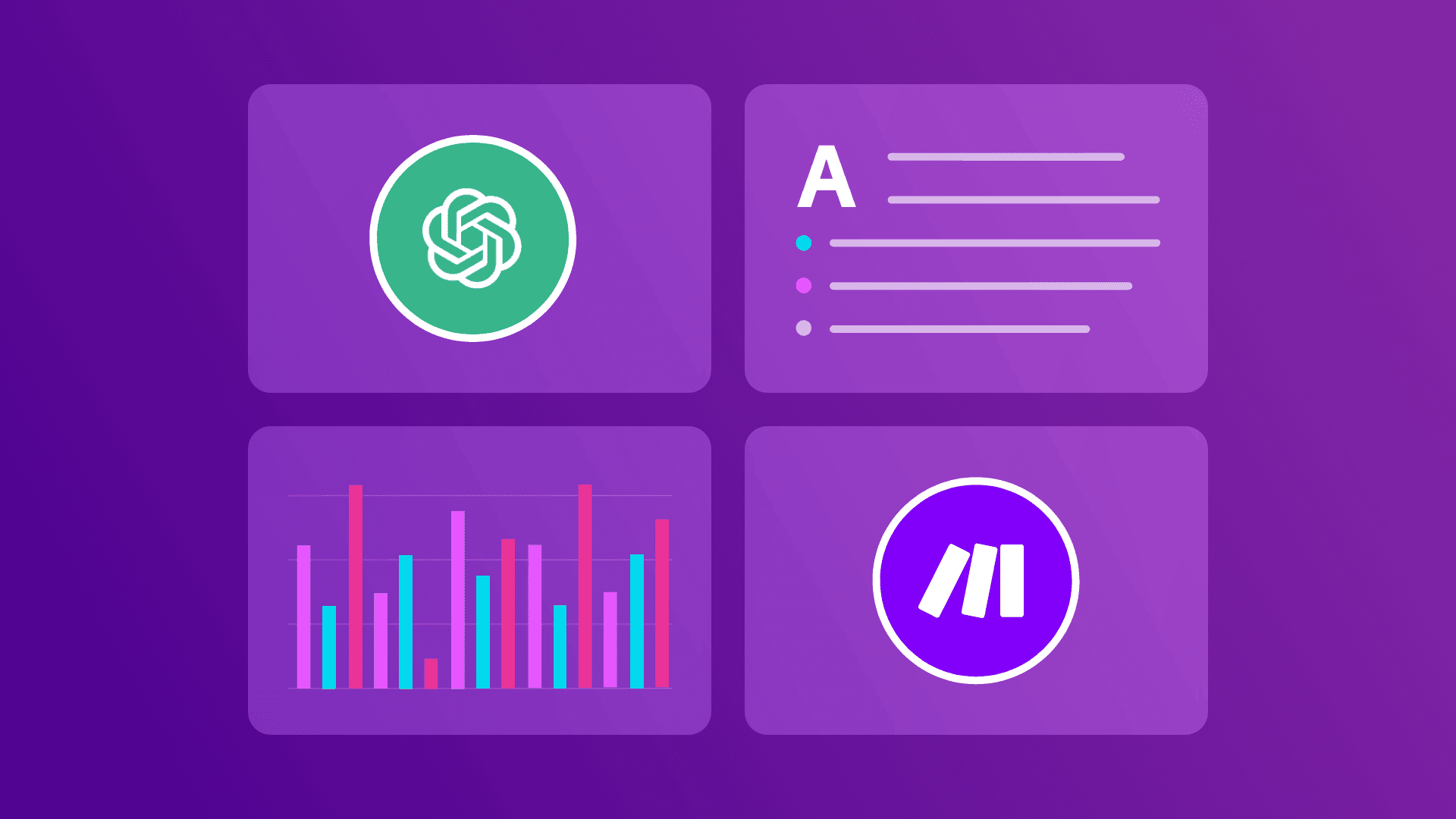
ChatGPT is a chatbot that uses a large language model to quickly interpret and respond to text input. It is developed by a company called OpenAI and can be used in almost infinite ways, including explaining concepts, generating ideas, writing content and code, and automating workflows.
For example, here’s ChatGPT generating tips on the fly for saving water:
The advanced version of ChatGPT, called ChatGPT 4, can even interpret image-based inputs.
Impressed and want in on the action yourself? Then let’s explore how you can get started with ChatGPT, what you can do with it, tips for getting more helpful responses from the chatbot, and more.
How to get started with ChatGPT
To start using ChatGPT, go to the ChatGPT website. Click “Sign up” to create an OpenAI account.
Go through the process of creating your account. When you’re done, you’ll see this welcome screen:
Type your instructions for ChatGPT (also known as a “prompt”) in the “Message ChatGPT…” box at the bottom, then hit Enter on your keyboard.
ChatGPT will start writing a response!
You can also download the ChatGPT app for iOS or Android devices to access the chatbot while on the go.
If you want some inspiration for what you can use ChatGPT for, here are some ideas.
Using ChatGPT to write code
ChatGPT can generate code in less than a minute, saving you the time and trouble of writing it yourself.
It can also perform coding-related tasks like:
Explaining how basic programming concepts work.
Troubleshooting code errors.
Improving existing code you provide it.
Converting code from one programming language to another.
Using ChatGPT for language learning and translation
While English is ChatGPT’s primary language, it can also explain the meaning of non-English text. This is helpful if you need a quick text translation or are trying to learn a new language.
For example, you can ask ChatGPT what various foreign-language words mean:
You can also ask it to translate a piece of text to another language. Languages that ChatGPT can translate text to, or from, include:
Arabic
Dutch
French
Hebrew
Japanese
Korean
Latin
Turkish
Using ChatGPT for work
ChatGPT excels at text-based tasks, making it a fantastic co-worker for writing-related tasks. It can also help with data analysis.
Here are some ideas for putting ChatGPT to work in the office:
Brainstorming ideas: E.g. “Give me a list of ideas for promoting our upcoming fundraiser.”
Writing emails: E.g., “Write me an email to my client that asks for more information on their project requirements and budget. Use a friendly and professional tone.”
Writing article outlines: E.g., “Write an outline for an article on how to build a Telegram bot.”
Rewriting content: E.g., “Rewrite this paragraph to use a more lighthearted, energetic writing style.”
Proofreading text: E.g. “Check the spelling and grammar of my draft report.”
Writing Excel formulas for data analysis: E.g., “Write me an Excel formula for finding the top 5% of values in a [spreadsheet column].”
Generating charts, tables, and graphs: E.g., “Generate a bar chart using these data points…”
In addition, by integrating ChatGPT with the other apps you use at work, you can automate your tasks in powerful ways. We’ll share more about this in the next section!
Just be careful about sharing confidential business information with ChatGPT.
While OpenAI has taken security measures to prevent personal data in its possession - which can include the contents of your ChatGPT prompts - its privacy policy warns that “no Internet or email transmission is ever fully secure or error-free.”
Glitches that cause the leaking of information you share with ChatGPT may also happen. In March 2023, for example, a glitch allowed ChatGPT users to view the titles of other users’ ChatGPT conversations.
The power of ChatGPT integrations
After getting ChatGPT’s response to your prompt (e.g., a summary of your meeting notes), you may want to use this response in another app (e.g., emailing the meeting summary to your supervisor).
Manually transferring this response to the other app can be a hassle, so set up a ChatGPT integration to automate the process instead.
A ChatGPT integration is a software connection that sends data between ChatGPT and other apps. For example, you could integrate ChatGPT with Google Docs and Gmail such that ChatGPT will summarize the contents of meeting minute documents saved in Google Docs format.
ChatGPT then transmits this summary to Gmail, which emails it to a recipient(s) of your choice. All this happens automatically once you add a new meeting minute Google Doc to a specified Google Drive folder.
With Make, building a ChatGPT integration is straightforward and no coding is needed. You’ll create a new automation, then add app modules that will take actions when certain trigger events happen in other apps.
You don’t need a ChatGPT Plus subscription to integrate ChatGPT with Make. However, you’ll need to get OpenAI tokens to run your integration.
Learn more about ChatGPT integrations - and how to build your own - here.
3 tips for getting more helpful responses from ChatGPT
The prompts you provide to ChatGPT influence its answers, so use these three tips to create more effective prompts - and get more useful responses!
1. Have ChatGPT generate prompts for itself
The more detailed your prompts, the more accurately ChatGPT will be able to customize its response to your needs.
But if you aren’t sure how to write such a detailed prompt, ask ChatGPT to do it for you.
The basic structure of this prompt is “Write me a detailed ChatGPT prompt about (topic).” You can also personalize it by saying “Write me a detailed ChatGPT prompt about (topic) that includes blanks I can fill out with more details to get a more useful response.”
ChatGPT will then provide you with an extensive prompt you can modify to fit your situation, then feed back to the chatbot - and get a detailed answer to it.
For example, here’s ChatGPT’s response when we ask it the generic question “What are some recommended sightseeing places in Tokyo?”
This list of recommendations is decent enough, but we can improve it if we can provide ChatGPT with more information on what we’re keen on seeing in Tokyo.
So, we’ll ask ChatGPT to write itself a detailed prompt, with options for personalizing it:
Notice how ChatGPT’s detailed prompt has us sharing the types of attractions, parks, and local cuisines we’re interested in (and more!). All these are crucial pieces of information that help ChatGPT tailor its suggested itinerary to match our preferences.
So, we’ll edit the detailed prompt to include more details on what we want to see in Tokyo:
Then, we’ll have ChatGPT answer it. Here’s a snippet of its response:
The difference in the relevance of ChatGPT’s recommendations is night and day!
2. Write your prompt in a way that invokes an emotional response
Being a bot, ChatGPT doesn’t have feelings. But users have discovered that writing prompts that invoke an emotional reaction can nevertheless improve the length and quality of ChatGPT’s responses.
For example, X (formerly Twitter) user @voooooogel did a test where she added “I won’t tip,” “I will tip $20,” and “I will tip $200” to her ChatGPT prompts.
She found that saying “I will tip $200” led to 11% longer responses. while saying “I won’t tip” decreased ChatGPT’s response length by 2%.
Source: Twitter - thebes
We tried this tactic for ourselves with a base prompt of “Share tips for writing a New Year's resolution.” ChatGPT provided a 289-word response containing 10 tips:
We then started a new chat using the prompt “Share tips for writing a New Year's resolution. I will tip $200”:
This time, ChatGPT shared 12 tips. Its response was also 351 words, or about 21.5% longer than its previous one!
On a related note: if you’re trying to get ChatGPT to write code, tell it “I don’t have fingers.”
For example: “Write me a Python script to automate file organization on my computer. I don’t have fingers.”
Users have also found that when they frame their programming prompt in this way, ChatGPT tends to provide the full code solution in response instead of shortening it.
3. Share your text with ChatGPT as a file upload to save on tokens
There are limits on the number of “tokens,” or parts of words, that a single ChatGPT request - consisting of one prompt from you and one response from ChatGPT - can use.
For instance, requests to ChatGPT 4 can use up to 8,192 tokens each. (More on ChatGPT 4 shortly.)
As a result, the longer your prompts, the shorter the response ChatGPT can provide. This is a problem if you need ChatGPT to analyze large portions of text, like an article or long block of code, before providing a detailed response.
But if you have a ChatGPT Plus subscription, you can get around this limitation using the ChatGPT 4’s file upload feature.
Start by adding the text you want ChatGPT to analyze to a text file (like a *.txt or *.docx file). Upload this file to ChatGPT by clicking the paper clip icon next to the prompt window:
Finally, write your prompt in a way that instructs ChatGPT to refer to the text in your file while carrying out your prompt.
This method works because the token limit for an uploaded text file is 2 million, which is significantly higher than the token limit for a request. However, each file you upload cannot exceed 512 MB.
Using ChatGPT plugins
If you have a ChatGPT Plus subscription, you can enable third-party plugins that allow ChatGPT to enrich its responses using data from the plugins’ creators.
Platforms that have created ChatGPT plugins include Expedia, KAYAK, Wikipedia, and Wolfram.
Once you’ve installed some ChatGPT plugins, ChatGPT will automatically use them whenever it thinks it’s appropriate to do so.
For example, if you have the Wikipedia plugin installed, ChatGPT may use it if you’re asking about a news event that happened after the cut-off date of the data used to train it. (This date is April 2023 for the GPT-4 model.)
Meanwhile, if you have the KAYAK plugin installed, ChatGPT can help generate car rental booking links from the KAYAK platform.
ChatGPT vs. ChatGPT 4
ChatGPT uses the GPT-3.5 language model by default. This language model can do a remarkable job of understanding text and generating text responses.
Following ChatGPT’s launch in November 2022, however, OpenAI has released a more advanced model called GPT-4. This model can process prompts in not just text format, but in image format as well. It also has more sophisticated reasoning abilities.
ChatGPT Plus subscribers can access a version of ChatGPT, called “ChatGPT 4,” which uses GPT-4.
This post by X user @petergyang demonstrates ChatGPT 4’s ability to interpret a photo of various parking signs at a parking space and then advise the user whether they can park there at a certain time:
Start your chat with ChatGPT
As should be clear by now, ChatGPT is an amazing tool - and there’s no better way of getting acquainted with it than trying it for yourself.
So, sign up for a free OpenAI account if you don’t already have one. You’ll then be all set to give ChatGPT a whirl.
After that, you can consider taking up a monthly ChatGPT Plus subscription to use the more advanced ChatGPT 4, ChatGPT plugins, and other awesome features.
You can also integrate ChatGPT with Make to automatically command the chatbot to process prompts when certain events occur, then feed its response to other apps for their further and immediate use.
Explore the possibilities in our ChatGPT integrations guide. And whenever you’re ready, you can sign up for a free Make account here.
FAQs
How does ChatGPT get its data?
ChatGPT gets its data from information publicly available online, information that OpenAI has licensed from third parties, and information that ChatGPT users and OpenAI’s (human) trainers have provided. Its data excludes information that OpenAI does not want ChatGPT to learn or reproduce, like hate speech and spam.
Can we use ChatGPT on mobile?
Yes, using ChatGPT on mobile is possible. You can do so by downloading and installing the ChatGPT app for iOS or Android devices. Alternatively, navigate to the ChatGPT website from your mobile device’s browser.
Does ChatGPT save conversations across devices?
If you have the chat history setting enabled for a certain device, ChatGPT will save your conversations on that device to your account. You can then access these conversations on any device from which you log into your OpenAI account.
You will need to enable (or disable) the chat history setting for every device for which you want (or don’t want) ChatGPT to save conversations to your account.

